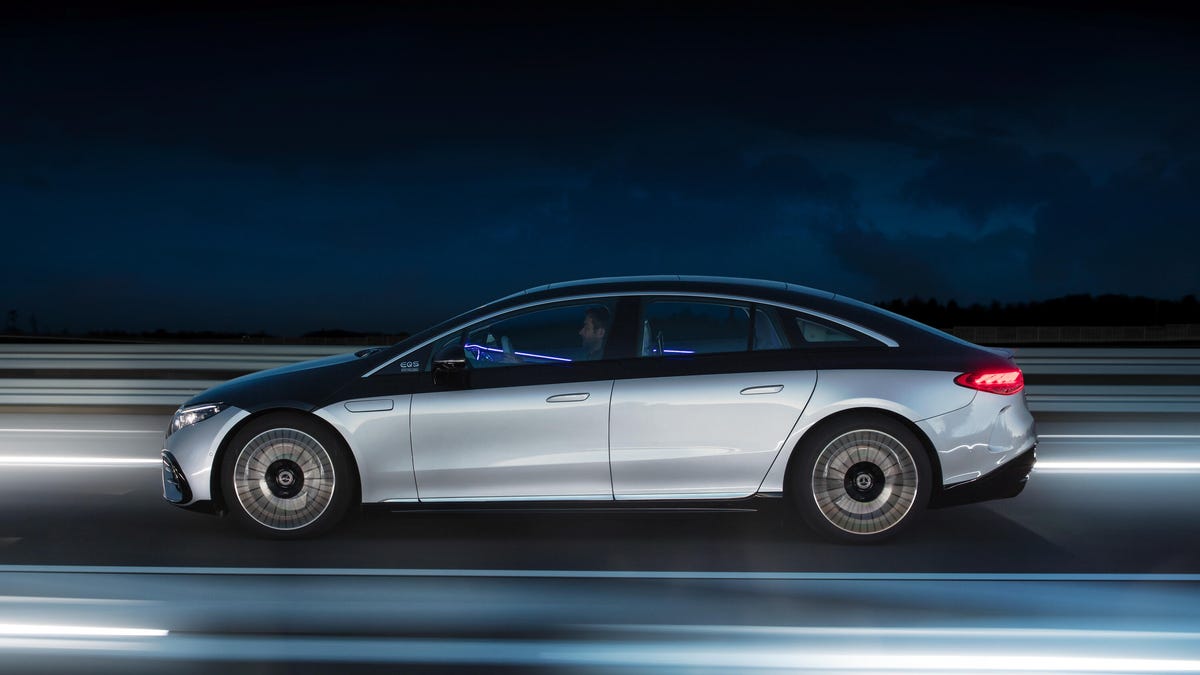The electric Mercedes EQS is the world's most aerodynamic production car
Its 0.20 drag coefficient beats the Tesla Model S and Lucid Air.
The new EQS sedan is ushering in a new design language for Mercedes' electric cars, with a super smooth body and a cab-forward "one-bow" look to the greenhouse and profile. The EQS isn't just shaped how it is because it looks good, though. Mercedes says the EQS achieves a 0.20 coefficient of drag, making it the world's most aerodynamic production car.
This comes hot on the heels of the updated Tesla Model S, which debuted back in January and boasted a 0.208 drag coefficient. Mercedes says the EQS' figure is a dead 0.200, unlike the Tesla's, which rounds up to 0.21, the same figure as the Lucid Air luxury sedan.
The same caveats that applied to the Model S apply to the EQS, however. The EQS won't be on sale until the fall, so while deliveries of the face-lifted Model S haven't started yet it will still likely beat the EQS to market and hold the aerodynamics crown for at least a few months. Also, the EQS isn't the most aerodynamic production car ever -- that record is jointly held by the General Motors EV1 and the phenomenally weird, Europe-only Volkswagen XL1, both of which had 0.19 coefficients.
That short, low hood is a boon to aerodynamics.
A lot of work went into the EQS' design to make it so slippery. The overall shape is the most obvious, but the low hood and short overhangs are key, too. The black panel in place of a traditional grille helps, as do the active shutters in the lower air intake and the clamshell design of the hood. The EQS also has pop-out door handles that are flush while in motion, a smooth underbody, little flicks on the wheel arches and a rear lip spoiler. Optimized door and window seals and special A-pillar trim improve the aerodynamics and also reduce wind noise, which is important for an EV due to the lack of engine sound.
The EQS is offered with wheels ranging from 19 to 22 inches, many of which have smooth faces for better aero. Mercedes says the EQS is actually most aerodynamic when equipped with the AMG Line package, which adds different bumper designs with a more aggressive look. But the difference in aerodynamics between the different versions and possible configurations is small, so no matter how you order the EQS, it'll still be the most aerodynamic car out there.
Mercedes has boasted about aerodynamics many times before. When the first-generation CLA-Class debuted in 2013 it had a drag coefficient of 0.22, which made it the most aerodynamic series-production car at the time. Both the current A-Class sedan and the new S-Class sedan also have 0.22 figures. And Mercedes made lots of super-slippery concepts, like the 2005 Bionic hatchback that had a design inspired by the real-life boxfish.
The electric EQ lineup is set to further expand later this year with the smaller E-Class-sized EQE sedan, an EQS SUV and an EQE SUV. I wouldn't be surprised if all of those EVs have similarly great aerodynamics, potentially even beating the EQS at its own game.


